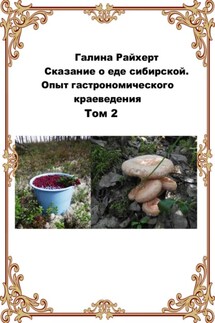Cooking with spice mixes, pastes and sauces - страница 21
Star anise pairing:
Fruits and vegetables: pineapple, cherry, pear, green onion, cabbage, potato, lemongrass, leek, raspberry, mango, carrot, tomato, beet, plum, pumpkin, citrus.
Protein product: legumes (especially rice, tamarind), pork, beef, poultry (especially chicken, duck), wild game, eggs, fish (especially salmon, tuna), seafood (especially scallops, shrimps), nuts.
Other foods: broths (especially beef and chicken), maple syrup, honey, drinks (including liqueurs, wine, tea), fish sauce, soy sauce, juice and zest (lemon, orange and lime), dough, bread and pastries, chocolate (including milk chocolate).
Seasonings and spices: basil, vanilla, cloves, cumin, ginger, cardamom, cilantro, coriander, cinnamon, sesame, turmeric, bay leaf, onion, nutmeg, mint, allspice, Szechuan pepper, black pepper, chili, fennel, garlic.
Cuisines and dishes: Vietnamese cuisine, Indian cuisine, Chinese cuisine, Malaysian cuisine.
SUMAC
Sumac has a pure fruity aroma with a mawkish citrus smell and a tart fruity astringent taste with a slight sourness. Sumac is very good for replacing lemon juice or other acidic medium for many dishes, marinades and sauces. It is especially popular in the Middle East: in Turkey, Lebanon, Iran and Iraq. You can try sprinkling onions and serve it to barbeque. It is very popular for grilling, whether it is meat, chicken or fish. Sumac is an integral part of za’atar mix.
Sumac pairing:
Fruits and vegetables: avocado, eggplant, pomegranate, zucchini, potatoes, lettuce, carrots, cucumbers, bell pepper, tomato, beet, citrus.
Protein product: lamb, beef, legumes (beans, peas, lentils, chickpeas), yoghurt, chicken (especially fried and baked), seafood (especially oysters), nuts (especially cedar, walnuts), fish (especially fried), cheeses (feta), eggs.
Other foods: olive oil, salad dressing, juice (lemon, lime, orange).
Seasonings and spices: cumin, ginger, coriander, sesame, onion, mint, oregano, paprika, allspice, black pepper, chili, parsley, rosemary, thyme, fennel, garlic.
Cuisines and dishes: Middle Eastern cuisine, kebab/doner, Lebanese cuisine, Moroccan cuisine, grilled meat and stews, vegetable dishes, Turkish cuisine.
SZECHUAN PEPPER
This pepper is very aromatic, saturated, with woody tart citrus notes. When overdosed, it may cause mouth numbness. If you believe that the only purpose of this pepper is to be a component of the chinese five-spice powder, then you are under a delusion. In his homeland, in China, this spice is respected as no other. It is a part of many dishes, ranging from sauces and gravies, ending with desserts and beverages. This pepper is popular for cooking fatty meat dishes (pork, duck) and fish. In most cases, it is necessary to warmup Szechuan pepper it in a dry frying pan before adding it into a dish. Besides China this spice is also used in Japan (spice mix shichimi togarashi). Szechuan pepper is added during the last stages of cooking process.
Szechuan pepper pairing:
Fruits and vegetables: eggplant, green beans, green onions, citrus.
Protein product: lamb, beef, wild game (including feathered wild game: quail), legumes (beans, peas), nuts, poultry (chicken, duck), pork, eggs.
Other foods: mushrooms, sesame oil, honey, rice wine, soy sauce, juice (lemon, lime, orange).






